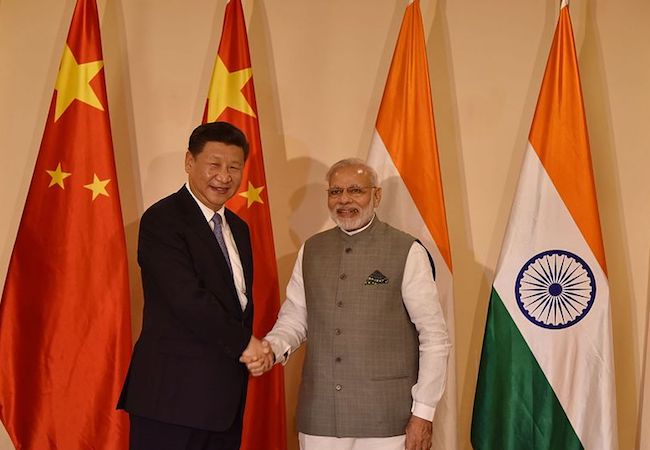
By Rani Singh and Tim Winter
We live in an era when state power is accumulated by building structures of connectivity. Such developments will be at the heart of competition between India and China, adding to existing tensions over trade, Kashmir and terrorism. It is against this backdrop that we need to interpret Xi’s visit to India last week. Both leaders put aside ‘formal’ deals and agreements more familiar to modern state-state diplomacy, in favour of a language of cooperation built on civilization and deep cultural ties.
Among the Indian media and expert commentary there was discontent for thorny issues not being addressed during Xi’s informal visit to Mamallapuram, a coastal town in the southern state of Tamil Nadu. However what we see in this meeting, their second in two years, is both leaders looking to their respective country’s geocultural pasts for strategic purposes, including the development of new cooperation and dialogue platforms.
Since 2013, China has framed its Belt and Road Initiative as a ‘revival’ of the Silk Roads for the 21st Century. Belt and Road partnerships and multilateral alliances are consistently wrapped in a romanticised history of Silk Road exchange, trade and enrichment, and its associations with peace and harmony. In marked contrast to a Huntington “clash of civilizations”, China draws on civilization as an asset of foreign policy to proclaim a new era of peace, respect and harmony. It is a language of cooperation and diplomacy, indeed a regional order, countries across Asia and East Africa appear ready to buy into. Many in India though, as we know, view BRI with suspicion and anxiety. Nonetheless, it is evident both leaders are looking to nurture a new form of great power cooperation, at a time when the economies of the two countries continue to falter and the United States seeks to retain its influence across the broader Indian Ocean region through Indo-Pacific multilateralism.
Ahead of Xi’s visit no efforts were spared to re-invoke India-China connectivities stretching back centuries. The ancient coastal town of Mamallapuram is evocative of historical maritime links, and enables history to be strategically refashioned as the harmonious exchange of trade, religion, ideas and goods. Modi served as a personal tourist guide to Xi. Amidst UNESCO World Heritage Sites he showcased Hindu culture and traditions, visited a Shiva temple and recounted a ‘shared heritage’ of connections between a prosperous Mamallapuram and the Chinese city of Quanzhou in Fujian province. Simultaneously, Xi emphasized the theme of longxianggonngwu, summoning India to realize the mutual rejuvenation of two great civilisations. Chinese media reports of the visit repeatedly emphasized the importance of this directive, calling it as the ‘only right solution’ to India-China issues.
Beijing has been using the Maritime Silk Road as a geocultural form to build the forms of connectivity that lie at the heart of Belt and Road. Over the past couple of years, Xi Jinping has instructed cities and provinces to strengthen ties with counterparts across the region around the theme of Maritime Silk Road cooperation. 2020 marks the 70th anniversary of the establishment of India-China diplomatic relations. Accordingly, both leaders announced it will be the Year of India-China Cultural and People to People Exchanges, and among the 70 planned activities there is talk of the two countries ‘re-enacting’ maritime voyages of past centuries. Together they proposed the historic cities of Quanzhou and Chennai should ‘revive’ their ancient maritime ties. Such ideas were captured in the exchange of gifts, whereby they offered portraits of each other depicted on silk and ceramic; the two quintessential materials of the Silk Road story, overland and maritime. Today, both Quanzhou and Chennai represent strategic maritime logistics centers for China and India respectively.
In the language of harmony and cooperation we also see something more complicated beginning to emerge. India and China will inevitably be locked into a geocultural rivalry as they continually seek to exert their influence in the wider region. Rani Singh is a PhD Candidate, University of Western Australia working on Silk Road geoculturalisms and India-China relations. Tim Winter is an ARC Future Fellow, University of Western Australia and author of Geocultural Power: China’s Quest to Revive the Silk Roads for the Twenty First Century (University of Chicago Press, 2019). See: www.silkroadfutures.net






